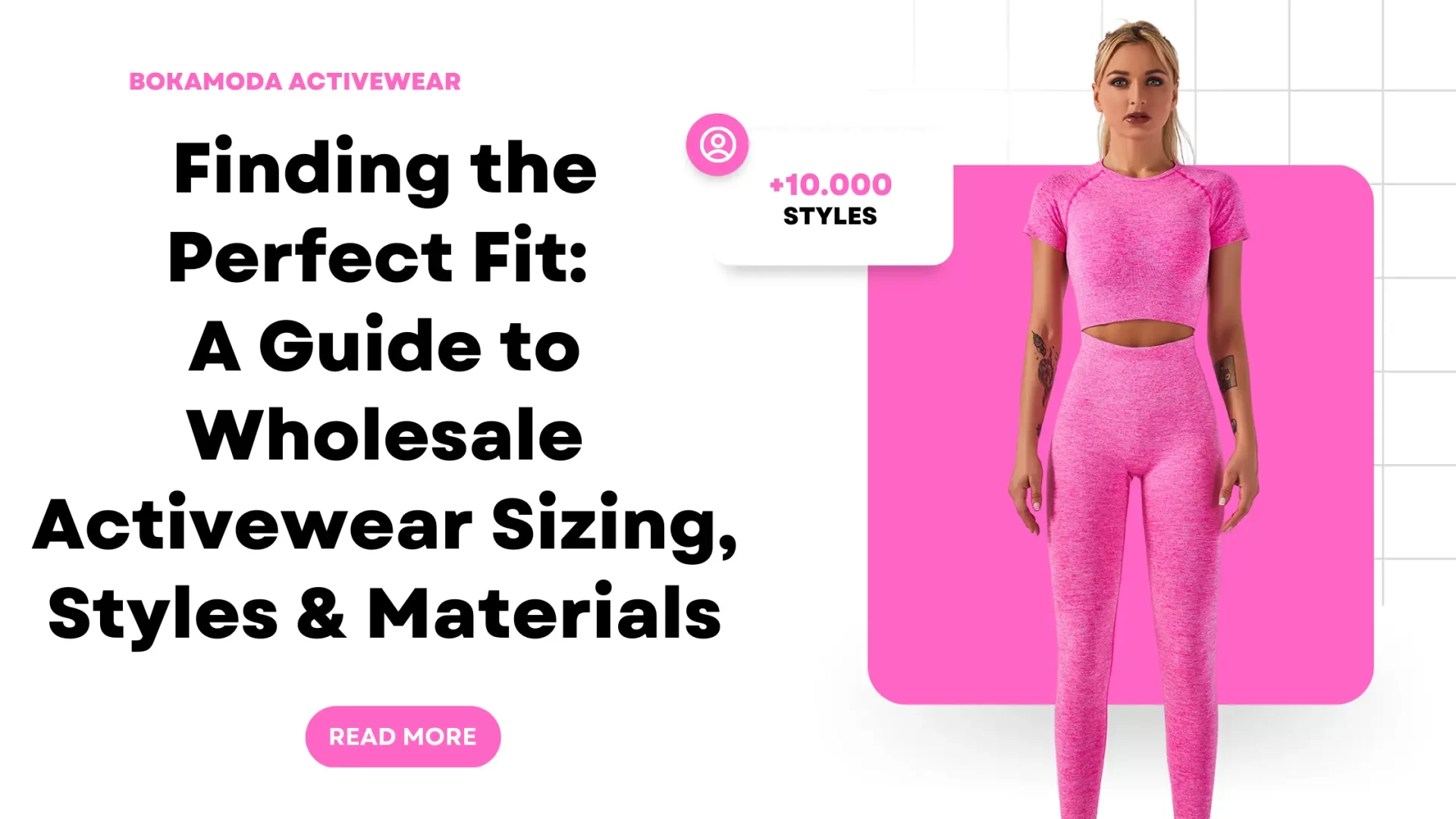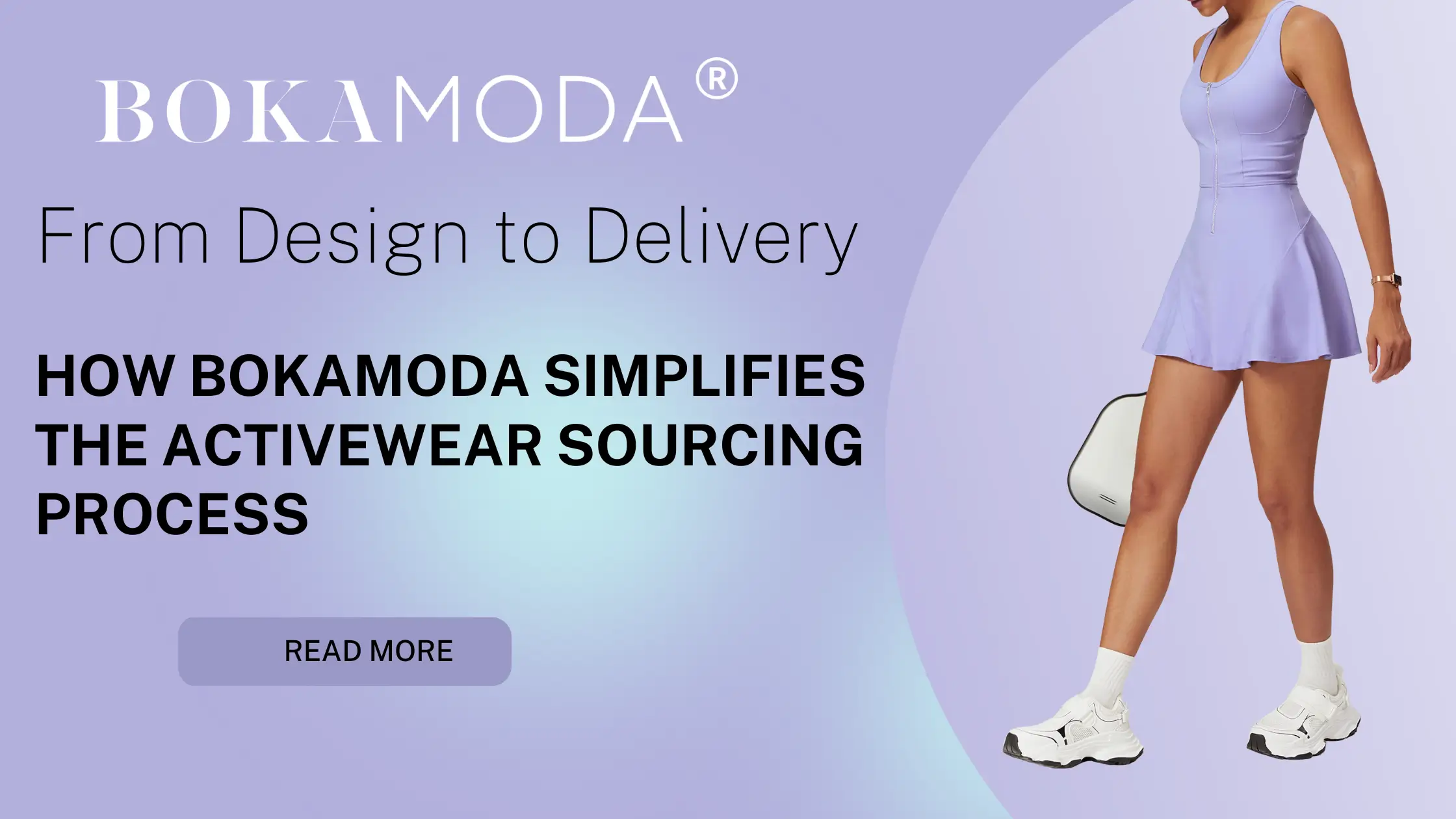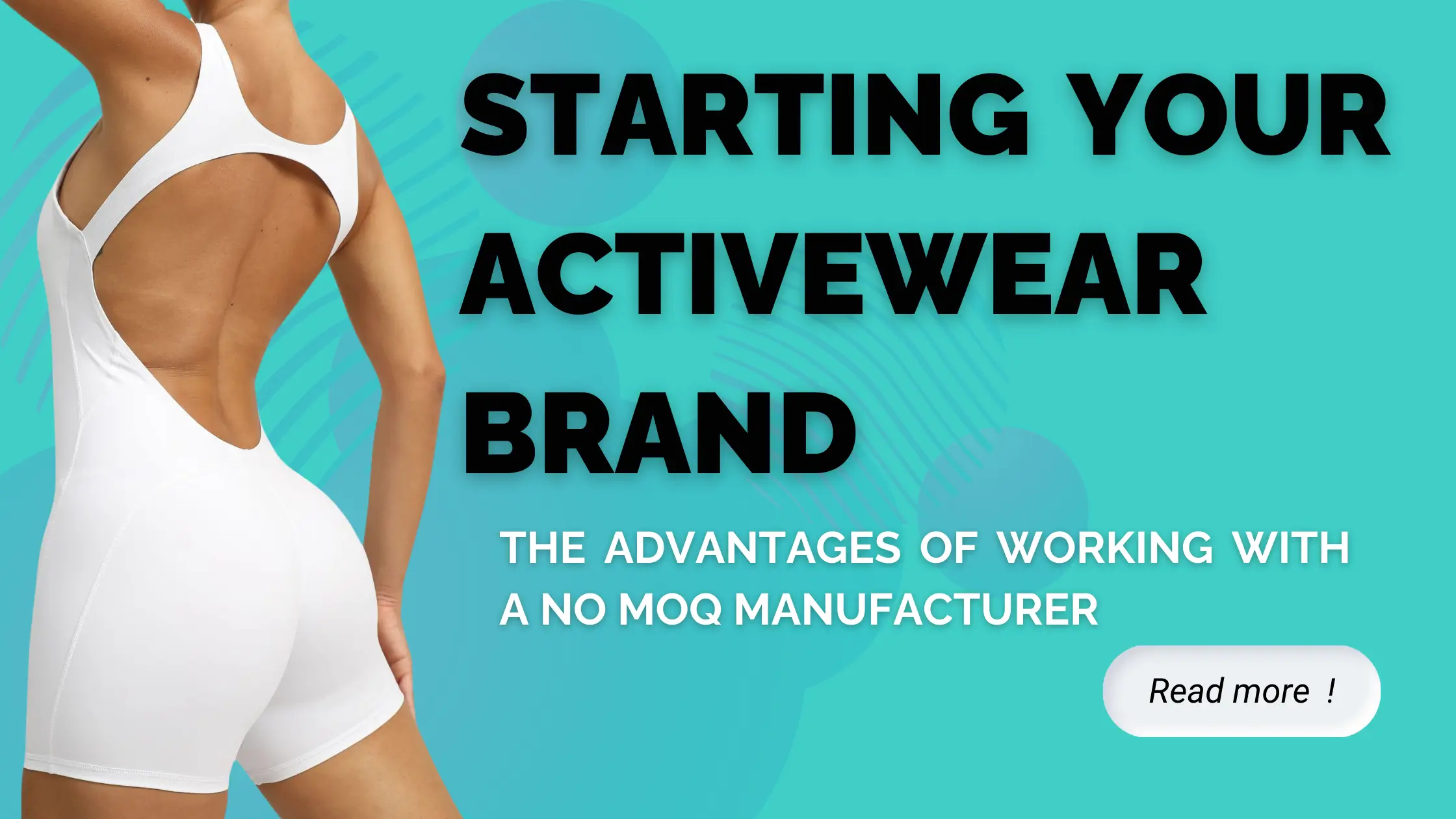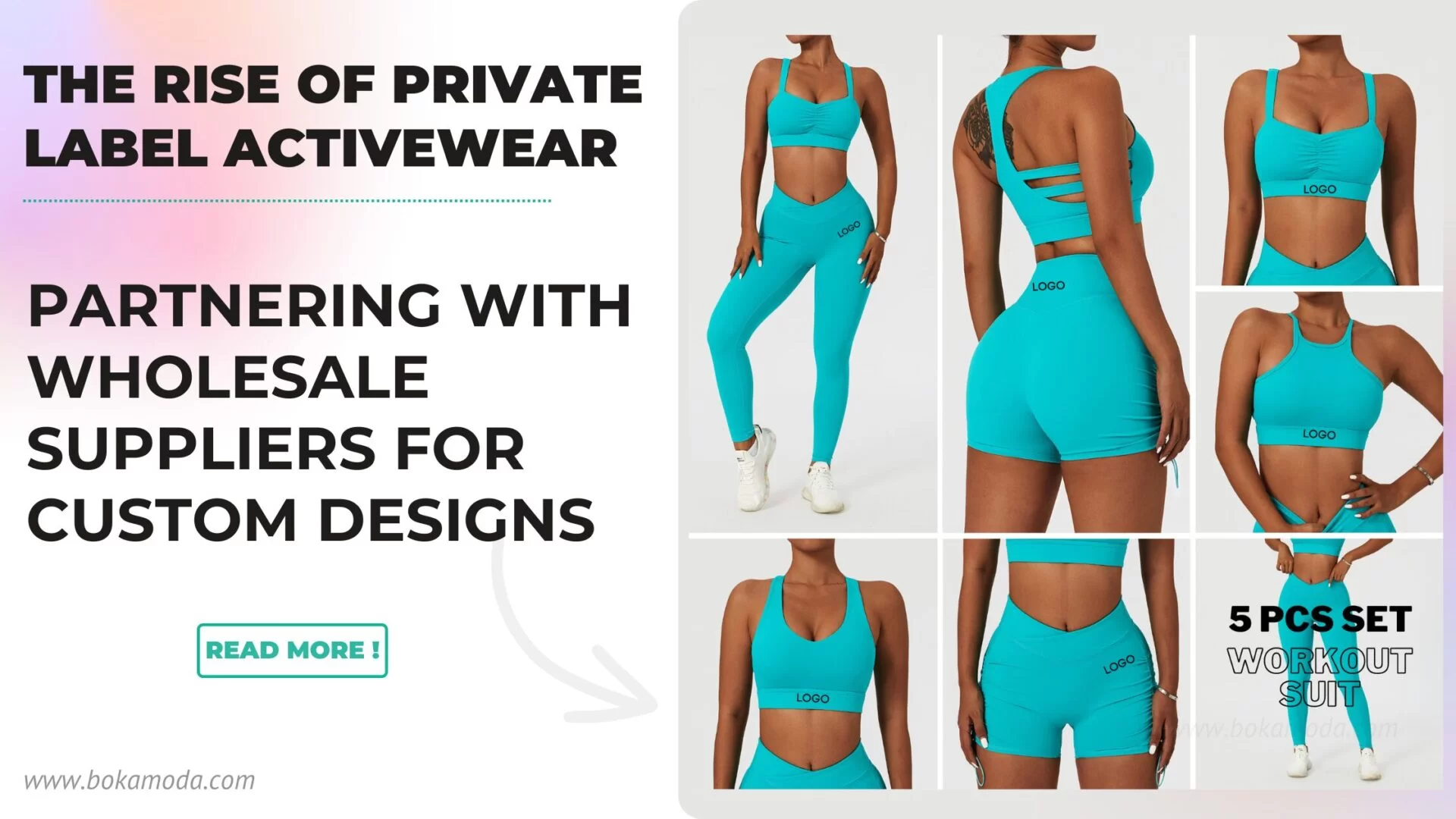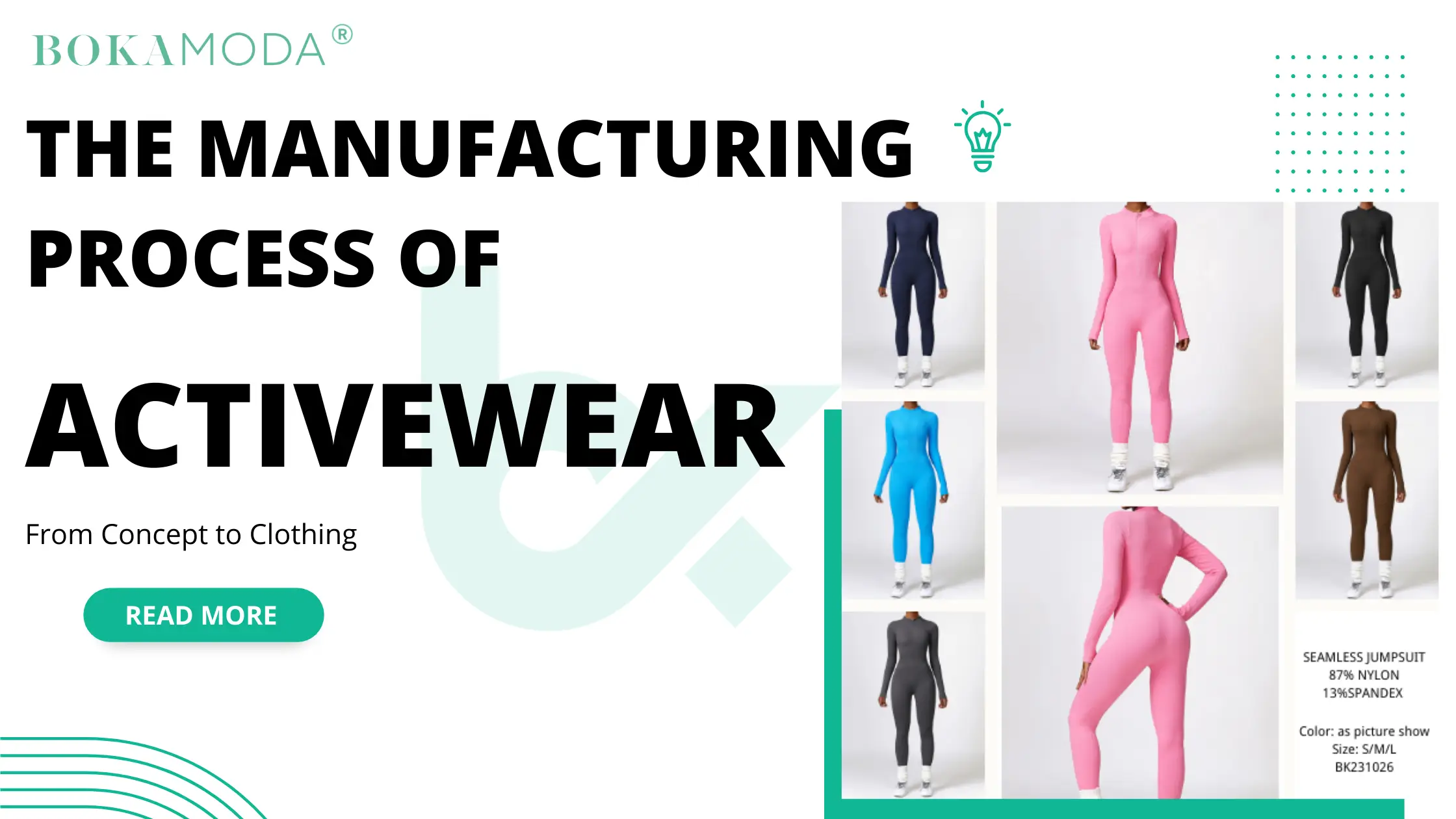
As a wholesale activewear supplier, one of the most important things you can do for your customers is to help them find exactly what they are looking for. Whether they’re looking for athletic wear for the gym, yoga, or running, or they simply want comfortable and stylish clothing for everyday wear, the right size and style can make all the difference.
In this guide, we’ll explore the key considerations for finding the perfect fit in wholesale activewear, including sizing, style, and material.
Sizing

When it comes to sizing, it’s important to offer a range of options to accommodate different body types and preferences. Some customers may prefer a looser, more relaxed fit, while others may prefer a tighter, more streamlined look. It’s a good idea to offer a variety of sizes, including plus sizes, to ensure that you can meet the needs of a diverse customer base.
Moreover, it’s important to provide accurate sizing information to help customers find the right fit. This includes providing measurements for each size, as well as detailed descriptions of the fit and feel of the clothing. You can also include customer reviews and ratings to help customers make informed decisions about sizing.
So, how can a retailer ensure that they are offering the right sizes in their wholesale activewear line?
Here are a few tips:
Research your target market

It is important to understand the size range of your target market in order to determine which sizes to stock. For example, if you are targeting a younger, athletic audience, you may want to focus on smaller sizes. On the other hand, if you are targeting an older, more diverse audience, you may want to offer a wider range of sizes.
Consider the fit
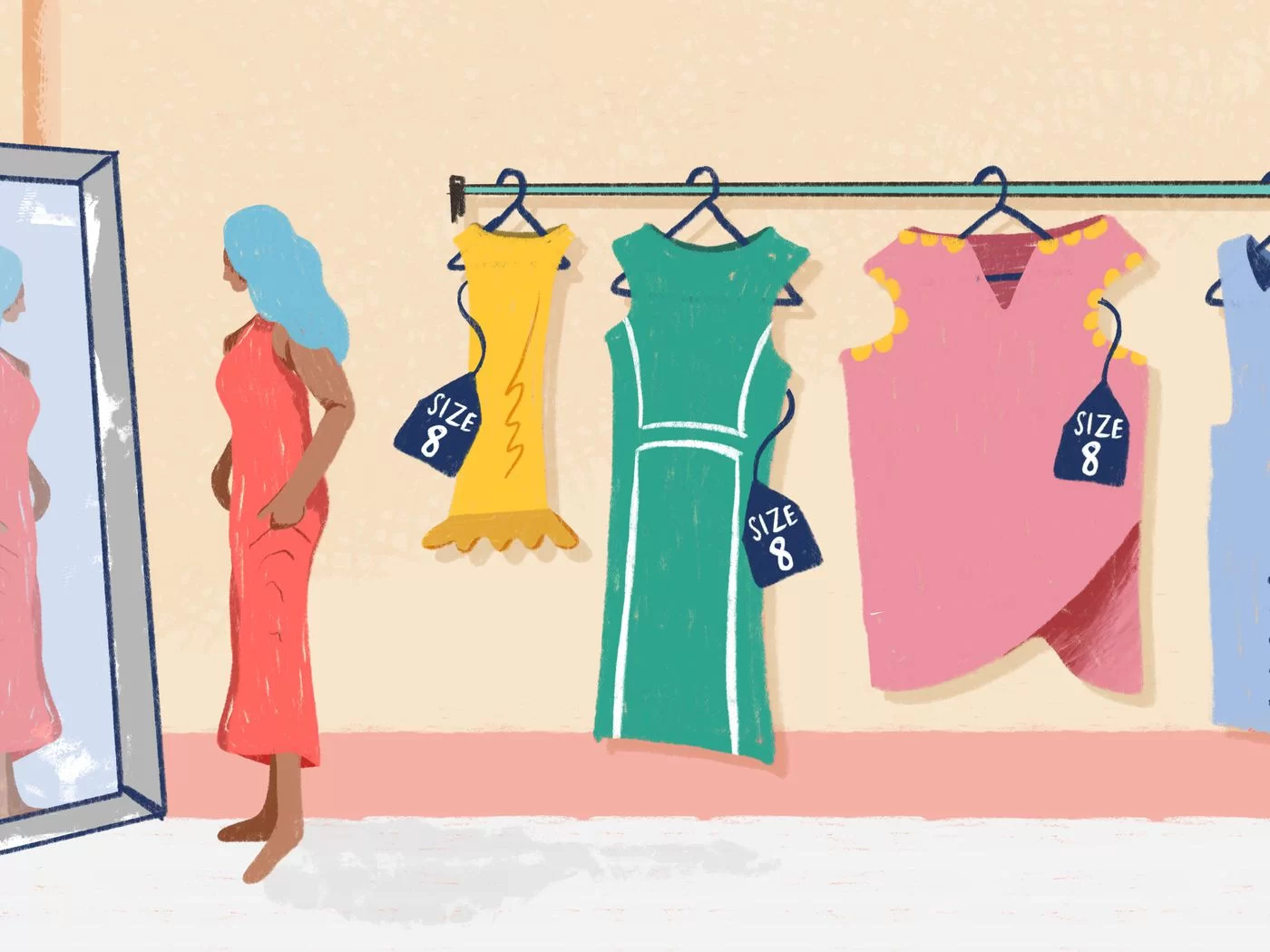
Credit: vox.com
Different activewear brands may have slightly different fits, even within the same size range. It is important to consider the fit of each brand when deciding which sizes to stock.
For example, if a brand runs small, you may want to order one size up in order to accommodate a wider range of customers.
Look at the size chart
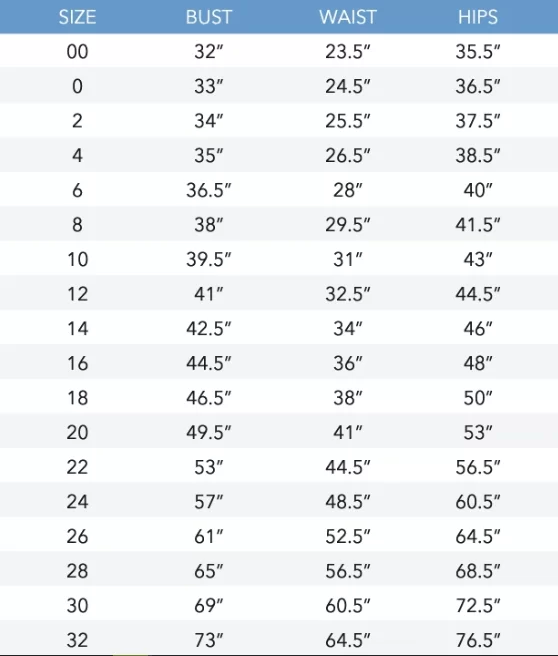
Most activewear brands provide size charts to help retailers determine which sizes to order. These charts typically include measurements for each size, such as bust, waist, and hips.
It is important to compare these measurements to your target market to ensure that you are ordering the right sizes.
Test out the sizes

If possible, it can be helpful to try on a few sizes in order to get a better understanding of the fit. This can help you determine which sizes are a good fit for your target market and which sizes may not be as popular.
Keep track of sales

It is important to keep track of which sizes are selling well and which sizes are not. This can help you determine which sizes to reorder and which sizes to phase out.
Styles

The importance of styles in the wholesale activewear industry cannot be overstated. In a market that is constantly evolving and becoming increasingly competitive, having a strong sense of style is essential for success.
Whether you are a manufacturer, retailer, or designer, the styles of your activewear products can make all the difference in attracting and retaining customers.
One of the most significant benefits of having a strong sense of style in the wholesale activewear industry is the ability to differentiate your products from those of your competitors.
With so many options available to consumers, it is crucial to have something that sets your activewear apart. This could be something as simple as unique color combinations or patterns, or it could be more innovative features such as specialized fabrics or technology. By offering something that stands out, you can differentiate your products and make them more attractive to customers.
In addition, the styles of your activewear can also play a role in attracting a specific target market. For example, if you are targeting a younger, more fashionable audience, you may want to incorporate more trendy styles into your product line.
On the other hand, if you are targeting a more performance-focused market, you may want to focus on technical features such as moisture-wicking fabrics and ventilation.
By understanding the needs and preferences of your target market, you can create styles that appeal to them and help drive sales.
Current popular styles revolve around the following items:
Leggings

These form-fitting pants are perfect for yoga, running, and other high-intensity activities. They come in a variety of lengths and styles, including high-waisted, capri, and full-length. High-waisted leggings are a popular choice for their slimming effect and comfortable fit, while capri leggings are a great option for warmer weather. Full-length leggings are a versatile choice that can be dressed up or down.
Sports bras
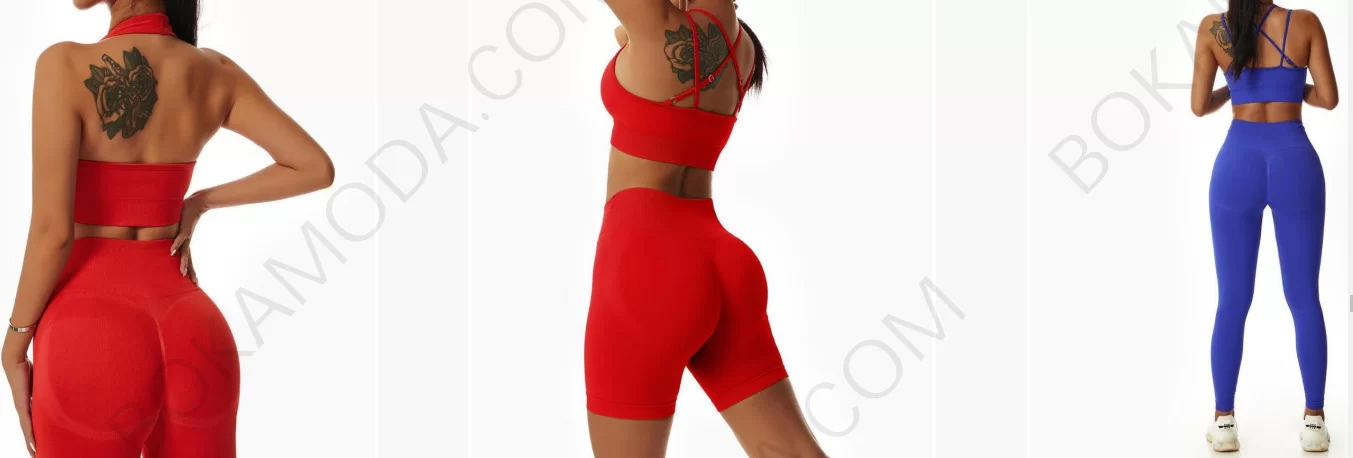
These supportive bras are designed specifically for high-impact activities like running and jumping. They come in a range of styles, including racerback, full coverage, and crop top. Racerback sports bras are a popular choice for their comfortable fit and freedom of movement, while full-coverage sports bras offer more support for larger chest sizes. Crop-top sports bras are a trendy choice that can be worn on their own or layered under a tank or tee.
Tanks and tees
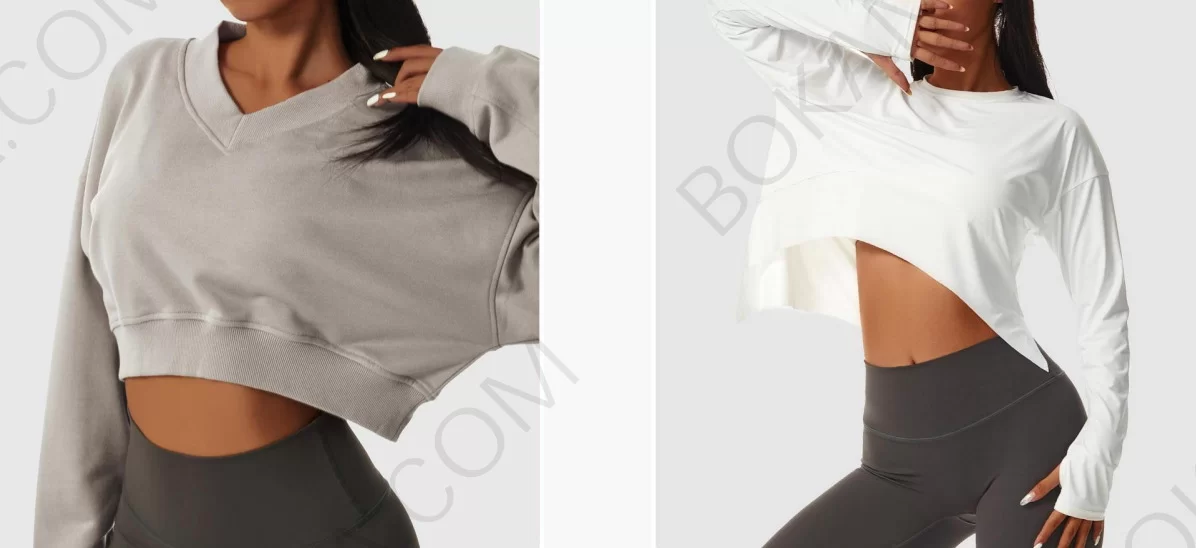
These lightweight tops are perfect for layering or wearing on their own. They come in a range of styles, including muscle tanks, crop tops, and long sleeves. Muscle tanks are a popular choice for their relaxed fit and wide armholes, while crop tops are a trendy option for showing off a toned midsection. Long-sleeve tops are a versatile choice that can be worn on their own or layered under a jacket or hoodie.
Jackets and hoodies

These layers are perfect for cooler weather or for wearing to and from the gym. They come in a range of styles, including zip-up, pullover, and quarter-zip. Zip-up jackets are a popular choice for their adjustable fit and ventilation, while pullover hoodies are a classic option for their comfortable, relaxed fit. Quarter-zip jackets are a trendy choice that can be worn on their own or layered over a tank or tee.
Shorts and pants
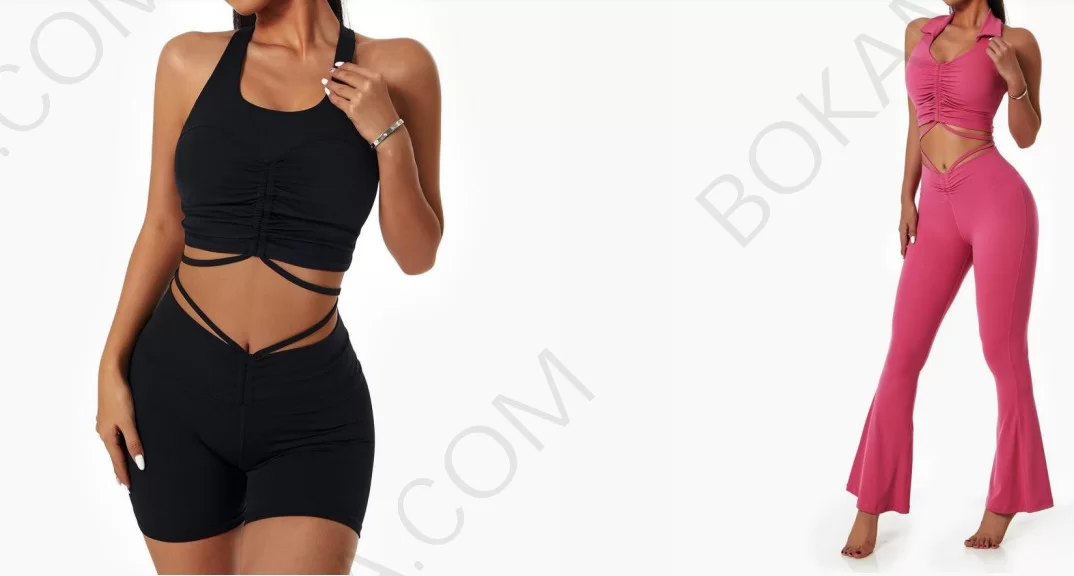
These bottoms are perfect for a variety of activities, from running to yoga to lifting weights. They come in a range of styles, including compression, loose-fit, and joggers. Compression shorts and pants are a popular choice for their supportive fit and muscle recovery benefits, while loose-fit shorts and pants are a comfortable option for everyday wear. Joggers are a trendy choice that can be dressed up or down.
Materials
In addition to considering style, it’s also important to consider material when choosing wholesale activewear. The right material can make a big difference in terms of comfort, performance, and durability.
Some popular materials for activewear include:
Cotton
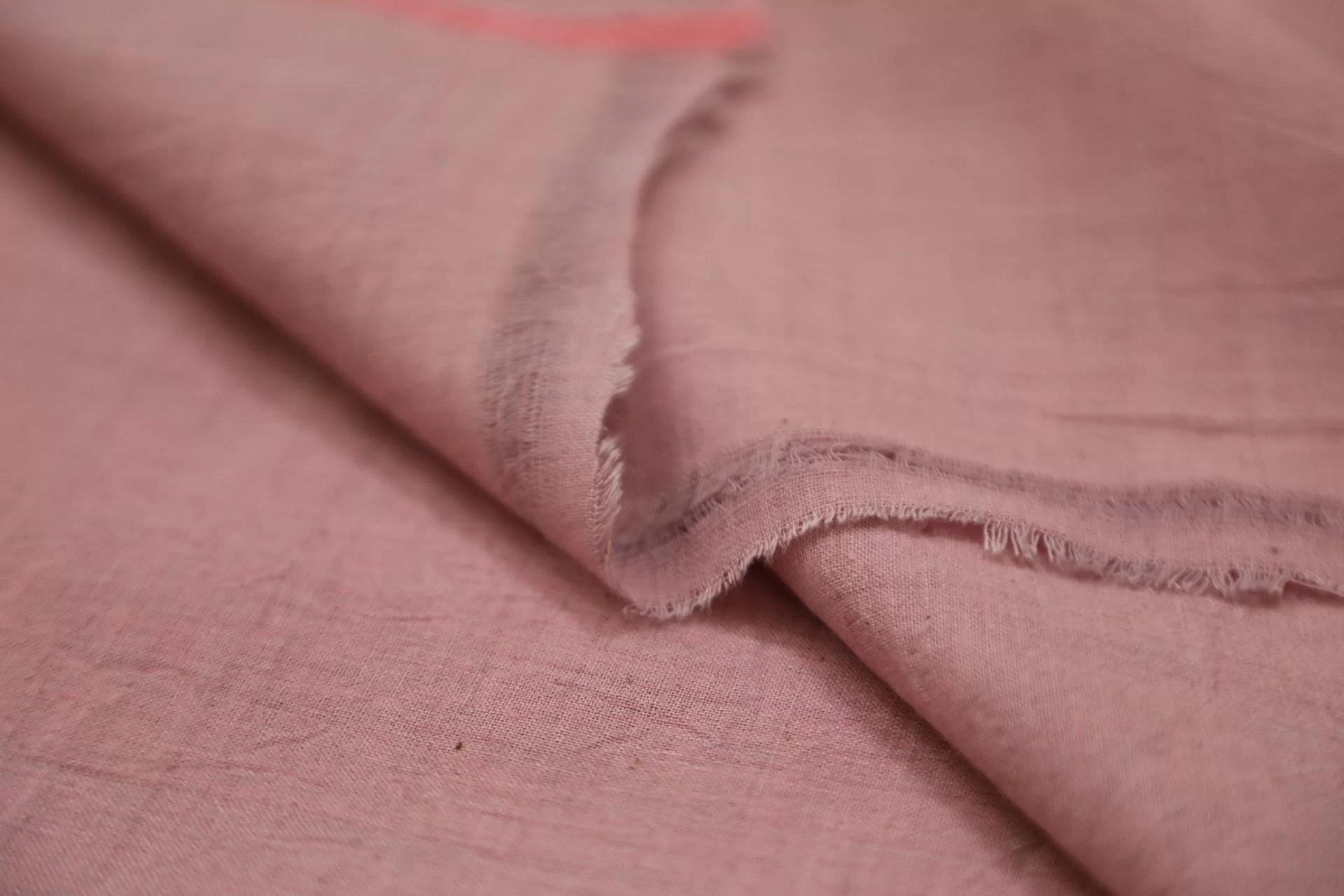
Cotton is a natural fiber that is commonly used in the production of activewear. It is known for its soft, comfortable feel and its ability to absorb moisture. These characteristics make it a popular choice for use in a variety of activewear products, such as t-shirts, sweatshirts, and athletic shorts.
One potential downside of cotton for activewear is that it may not be as durable as other materials, such as polyester. Cotton fibers can become stretched and worn out over time, especially with frequent washing and wear. However, newer technologies have been developed that help to improve the durability of cotton, making it a more viable option for use in activewear.
Polyester

Polyester is a synthetic fiber that is commonly used in the production of activewear. It is known for its durability, moisture-wicking properties, and ability to retain its shape and color. These characteristics make it a popular choice for use in a variety of activewear products, such as t-shirts, sweatshirts, and athletic shorts. Polyester is also relatively affordable, making it a cost-effective option for manufacturers and consumers alike. However, it may not be as breathable as other materials like cotton or bamboo. Despite this potential downside, polyester is a popular choice in the activewear industry due to its performance-enhancing properties and versatility.
Polypropylene

Polypropylene is a synthetic fiber that is commonly used in the production of activewear. It is known for its moisture-wicking properties, quick-drying ability, and resistance to bacteria and odors. These characteristics make it a popular choice for use in a variety of activewear products, such as t-shirts, sports bras, and athletic socks.
Nylon
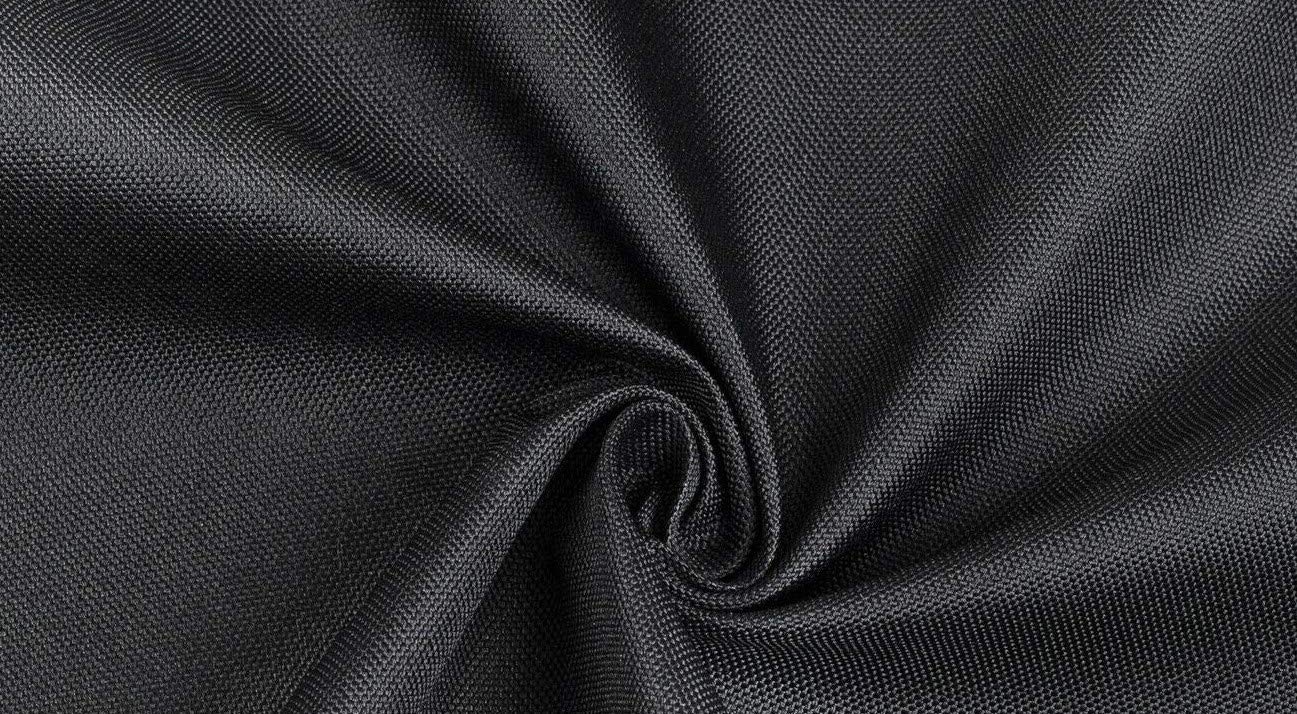
Nylon is a synthetic polymer that is commonly used in activewear and athletic apparel. It is known for its durability, moisture-wicking properties, stretchability, and easy care. Nylon is resistant to abrasion, making it a great choice for clothing that will be subjected to regular wear and tear during workouts or sporting events. It is also stretchy, allowing for a full range of motion and flexibility during physical activity. In addition, nylon is lightweight and dries quickly, making it a convenient choice for active individuals. Overall, nylon is a popular and practical choice for activewear due to its many functional properties.
Spandex

Spandex is extremely flexible and stretchy, making it great for people who do workouts that require a large range of motion, such as yoga and weightlifting. This synthetic fabric is found primarily in skin-tight clothing, such as track shorts, leggings and sports bras. You’ll also find spandex in socks, boxer briefs and looser garments in smaller amounts.
The ability to stretch up to eight times its usual size is the primary benefit of this fabric. Although it is not the best at wicking moisture and it is not the most breathable (though it is not bad at both aspects)), its stretchability offers unrestricted and comfortable motion in all movement patterns.
We need to note that Spandex can lose its stretch if washed or ironed too often.
Bamboo

Bamboo is a natural fiber that is increasingly being used in the production of activewear. It is known for its soft, comfortable feel, moisture-wicking properties, and sustainability. These characteristics make it a popular choice for use in a variety of activewear products, such as t-shirts, leggings, and socks.
It’s definitely a premium fabric, so expect a higher price tag for bamboo clothes than for other popular options. If you’re willing to pay the price, however, bamboo offers several features that all fitness aficionados adore: It’s moisture-wicking, odor-resistant, temperature-regulating and insanely soft.
Merino wool
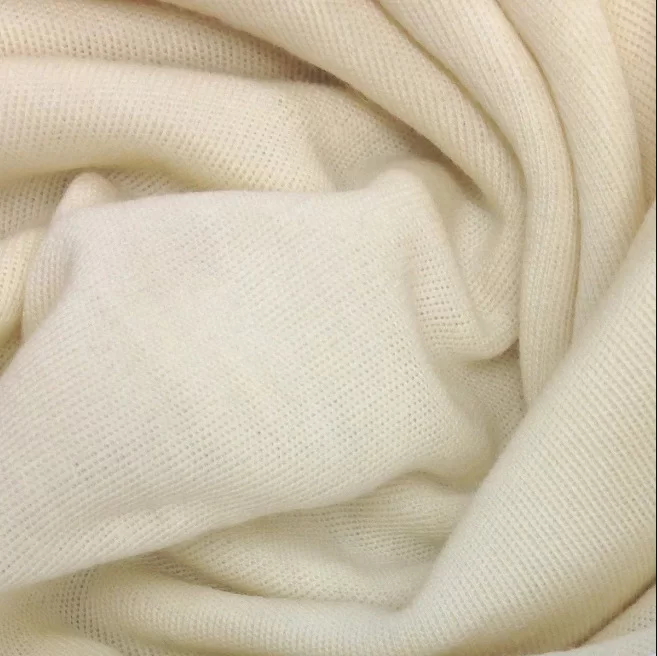
Merino wool is a natural fiber that is commonly used in the production of activewear. It is known for its moisture-wicking properties, temperature regulation capabilities, and soft, comfortable feel. These characteristics make it a popular choice for use in a variety of activewear products, such as base layers, socks, and athletic tops.
You probably won’t find too much activewear made of purely Merino wool — many athletic wear brands blend Merino wool with polyester and other fabrics for softness and breathability (and price — Merino wool is expensive).
